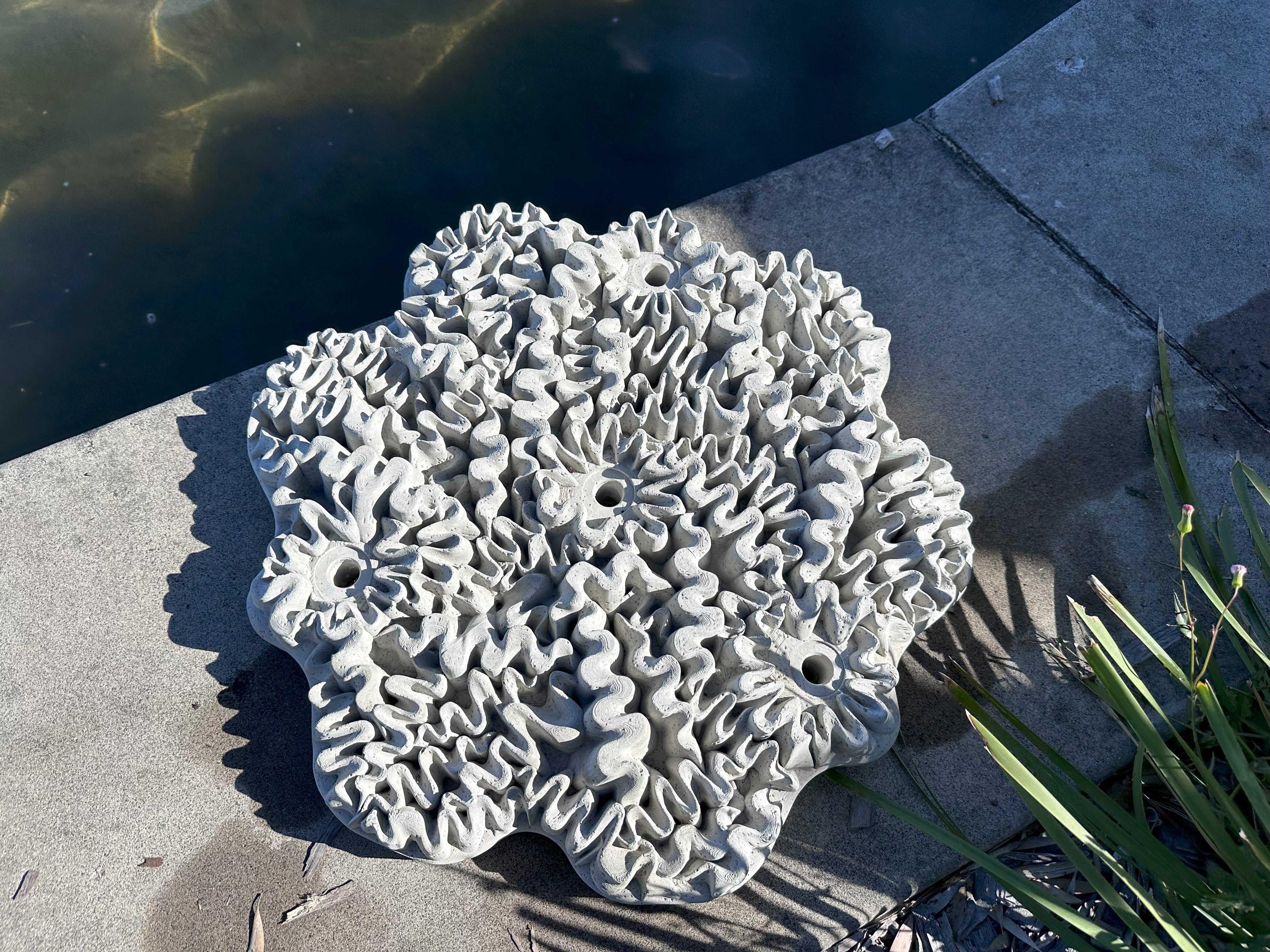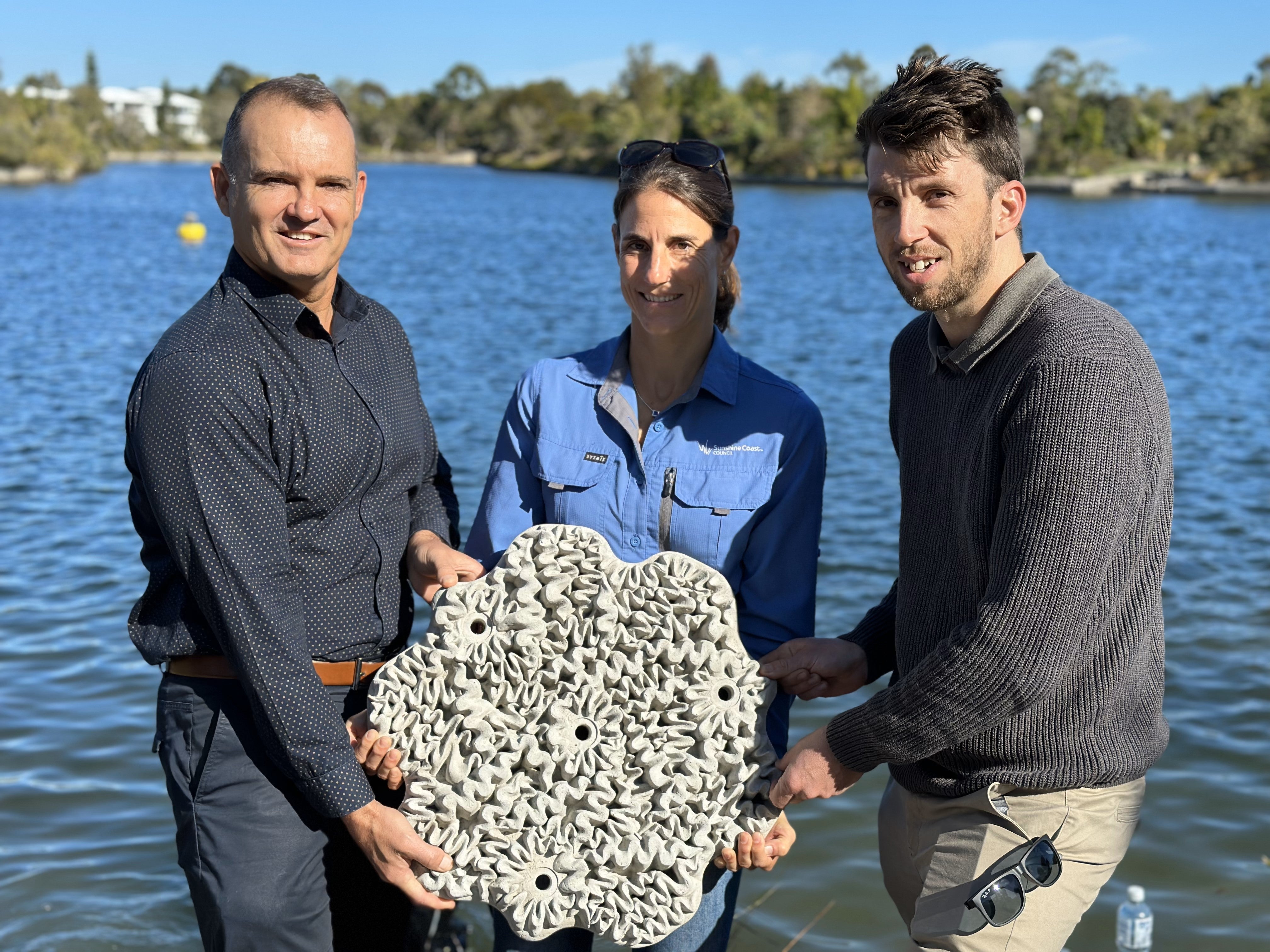Living seawall to breathe new life into lake
A fascinating trial aimed at boosting life within an artificial lake is a first for the Sunshine Coast.

Brightwater Lake at Mountain Creek could soon be home to a host of new occupants thanks to a set of unusually shaped tiles being installed.
In a first for the region, 50 panels will be bolted to the side of the artificial lake wall to create a living seawall.
With names such as ‘swimthrough’, ‘crevices’ and ‘honeycomb’ – each panel has been uniquely designed to mimic a variety of natural shoreline habitats, encourage seaweed to grow and serve as a refuge for marine creatures.
This 18-month research trial is a partnership between Sunshine Coast Council and University of the Sunshine Coast under the Regional Partnership Agreement.
Living seawalls have been successfully introduced in multiple Sydney locations, Port Adelaide, Townsville, Freemantle, Wales, Gibraltar and Singapore – but this is the first time they are being trialled in an enclosed constructed water body.

Sunshine Coast Council Environment and Liveability portfolio holder Councillor Peter Cox said the goal was to have our waterways thrive with life.
“It is hoped the living seawall will create more habitat for marine creatures within the constructed waterbody and improve its biodiversity by encouraging more seaweed to grow, create more homes for sea life and draw more fish into the lake,” Cr Cox said.
“It could also have the added benefit of improving water quality.
“This innovative product from the Sydney Institute of Marine Science has been successfully used in other areas of Australia and internationally and we are excited to see what it can do here on the Sunshine Coast.
“With the Sunshine Coast officially recognised as a UNESCO Biosphere, Council remains committed to projects such as this, to showcase how we can live harmoniously with nature.”

How Living Seawalls work
Brightwater Lake links to the Mooloolah River and is one of the Sunshine Coast’s newer constructed waterbodies.
Its perimeter is a smooth, featureless concrete wall which lacks any of the characteristics of a natural shoreline or waterway.
Living seawalls address this by retrofitting the wall with panels that mimic microhabitats and create protective spaces for fish and other marine life.
Council has been monitoring life in Brightwater Lake since 2021 using baited remote underwater video stations.
Sunshine Coast Council’s Senior Coastal Conservation and Planning Officer Dr Simone Bosshard said fish, including gobies and bream, were already present but the aim was to draw in a more diverse list of native species.
“Through this trial, 50 habitat panels will be installed at two sites in the lake which have slightly different conditions,” Dr Bosshard said.
“We will monitor the changes in the species that live on the seawalls, like seagrass, algae and invertebrates and then the fish life that lives near the seawalls.
“Depending on the outcomes of the trial, it could be extended or replicated in other locations in the future.”
The science behind seawalls
Andrew Olds from UniSC School of Science, Technology and Engineering said the technique was called eco-engineering.
“Eco-engineering is when necessary urban structures are designed for ecological co-benefits.
“Our research objective is to see if the installation of the living seawall in a constructed man-made lake, such as Brightwater Lake, will improve the variety and abundance of marine species.
“This trial will give us scientific data on the benefits of eco-engineering techniques, like living seawalls, from a local perspective.”
The outcomes of the trial will be shared with industry, government and community.
Learn more about living seawalls or the Sunshine Coast living seawall project.
